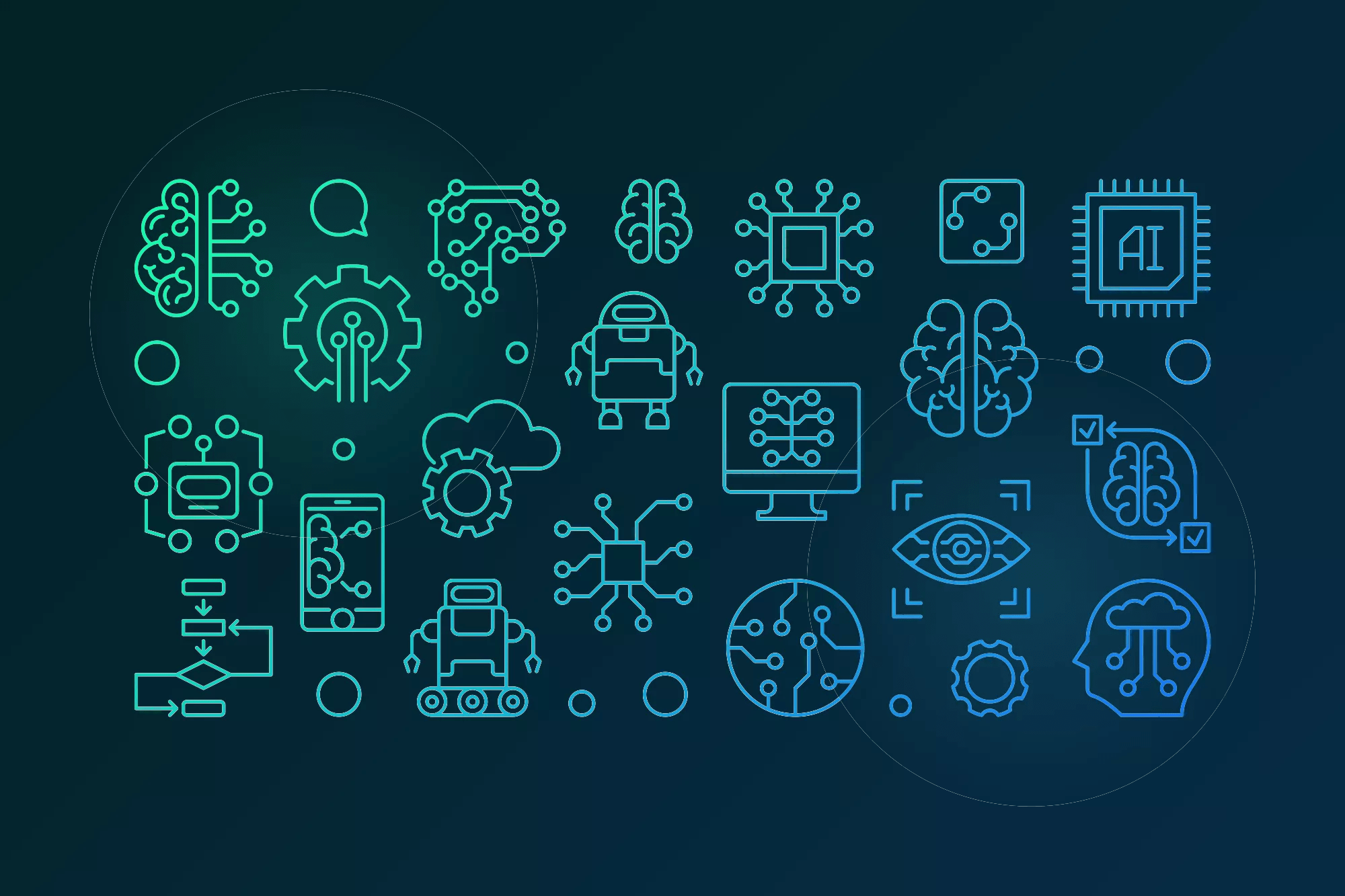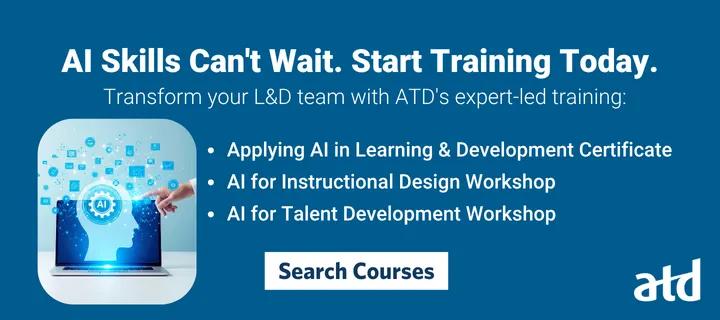ATD Blog
Gamification Meets AI: Driving Engagement in Learning Programs
Artificial intelligence can level up your learning experiences, especially when combined with gamification.
Wed Dec 04 2024

As L&D professionals, we’re always looking for ways to elevate our skill sets and gain more prestige in the industry. Adding AI into your toolkit can make a significant difference—and it’s no secret leaders want their top talent to gain this skill. This incredible technology can level up your learning experiences, especially when combined with gamification. When you bring artificial intelligence (AI) and gamification together, you’re not just designing learning programs—you’re crafting training experiences that are engaging, motivating, and meaningful. And let’s be real: Gamification is a bonus badge any L&D pro should want.
Game Mechanics: Your Rules of the Game
Let’s talk about game mechanics, the first essential element in gamified learning programs. Think of mechanics as the rules and structure that shape your training experience. These include setting key performance indicators (KPIs), aligning content with business goals, and even ensuring legal compliance. In a gamified training initiative, mechanics give your learners clear goals, feedback loops, and a sense of step-by-step progress—things like repetition, quizzes, points, or completion badges that drive learning outcomes.
This is where AI becomes a valuable co-designer. Ask AI to help you set up the structural elements of your program, making sure you haven’t missed any key pieces like scheduling, tech requirements, or measuring performance. AI can manage the logistics: sending reminders, organizing follow-ups, and even analyzing learner data to ensure that no detail is overlooked. With AI handling the behind-the-scenes tasks, you have more freedom to focus on the strategic and creative elements of your learning program.
Game Dynamics: Motivational Forces in Play
While mechanics set the rules, game dynamics are the level up that makes people want to play, the elements that make the experience fun and engaging. Dynamics describe the emotional forces that pull learners in and keep them motivated—things like curiosity, competition, and collaboration. In a training initiative, designing for game dynamics determines how learners feel about the material, their buy-in to the process, and how memorable and useable the outcomes are.
At Leaders Uplifted, we created our LIFT System to more easily define game dynamics into four powerful categories that boost learner engagement. Try out this gamified + AI spin on human-centered design by assessing your program through any of these four lenses:
Language: The words chosen and the way people talk about their learning significantly affects engagement. Prompt AI to help ensure the language used in your training program resonates with learners in a way they’ll understand. Is it inclusive? Does it speak to their needs and goals? AI can even help you adjust the tone and style of pre- and post-event communications to match your audience.
Influence: AI can also support designers in leveraging influences—social and logistical factors—that drive or prevent success. Think about overwhelm (for example, when training happens at a peak time of year), motivation (such as a new title or raise after completion), and connection (everyone’s taking this course so I should too). Ask AI to guide you in adjusting influences like the timing and pacing, attendee selection process, and recognition and rewards to ensure learners feel encouraged to grow, rather than bogged down by training.
Fellowship: It’s no secret that social learning amplifies engagement, and when learners feel like part of a group, their experiences are more memorable. Even better, social gamification can help sustain the conversation and skills within the workday long after training has wrapped. Ask AI to suggest ways to enhance group collaboration, whether through team discussion, peer-to-peer feedback, or gamified challenges that bring people together.
Traction: Finally, traction describes the principle of practice and results—we like to think of it as trying a new action. AI can help with suggestions for where learners can bring new skills into their daily routines. It’s not just about completing a training program—it’s about creating a steady rhythm of tangible tasks, practical application, and reflection. AI can create resources for learners to track progress, help with talking points for one-on-ones, and craft comms/sustainment plans to provide nudges that keep learners moving forward.
AI as Your Creative Partner
One of the most exciting parts of working with AI is that it doesn’t just execute—it can offer ideas. One of the best prompts you can share with AI to start is: “Think of yourself like a top learning designer for a leading company,” then ask your new AI consultant for creative ways to increase learner engagement or how your learners might respond to different elements in the program. Need a creative boost? AI can suggest ways to build leaderboards, reward systems, or collaborative features that encourage learners to stay connected and engaged throughout the training initiative.
By managing both game mechanics and dynamics, AI enables you to truly design learning programs that feel like an immersive game—but one with serious training goals behind it. You’re not creating video games or playful diversions; you’re designing experiences that help learners gain skills, grow their confidence, and take meaningful action.
So, the next time you sit down to create a training program, don’t just think of yourself as a learning designer, think of yourself as a game maker. Using AI plus the LIFT power ups, try out the process like a game you’re playing too—experiment, discover, and see how AI can help engage your learners in deeper and more meaningful ways.

